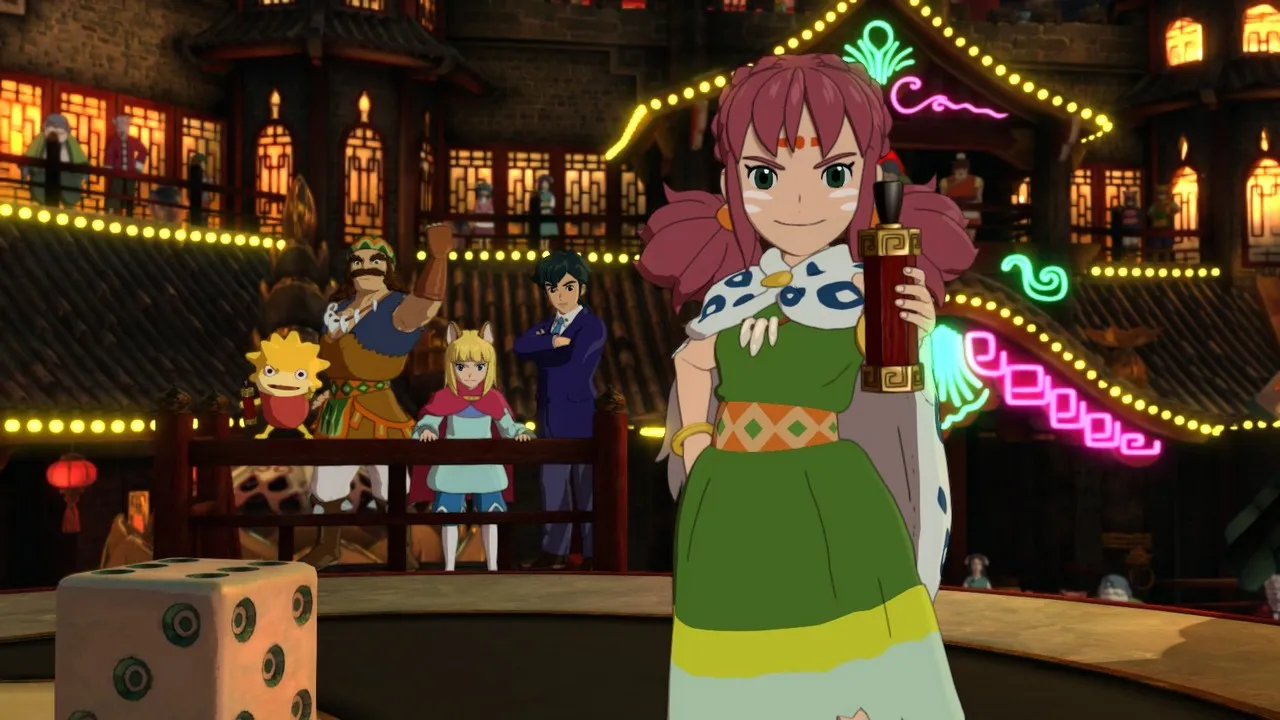
Ni no Kuni II: Revenant Kingdom Review: A Kingdom of Contradictions
Contents
Ni no Kuni II: Revenant Kingdom, with its evocative title, promises a compelling narrative of a “second country” built by Evan Pettiwhisker Tildrum, a young king seeking to rebuild his lost legacy. Alongside Roland, a visitor from another world, Evan embarks on a journey shaped by their shared loss and burgeoning leadership. The concept of this “second kingdom” – a blend of vision and reality – forms the core of their intertwined destinies. Much like the premise suggests, Ni no Kuni II is a Pandora’s Box of diverse gameplay elements, both captivating and flawed. It exemplifies the adage “bigger is not always better.”
A Kingdom Built on Charm and Frustration
 Ni no Kuni II: Revenant Kingdom – Evan and LoftyThe game’s opening is undeniably bizarre: a president witnesses a missile strike, gets transported to a fantastical kingdom, and encounters a cat-eared boy. It’s a sequence that defies expectations, even for a Japanese RPG. The kingdom from which Evan and Roland must escape bears the whimsical name of Ding Dong Dell.
Ni no Kuni II: Revenant Kingdom – Evan and LoftyThe game’s opening is undeniably bizarre: a president witnesses a missile strike, gets transported to a fantastical kingdom, and encounters a cat-eared boy. It’s a sequence that defies expectations, even for a Japanese RPG. The kingdom from which Evan and Roland must escape bears the whimsical name of Ding Dong Dell.
Ni no Kuni II is a complex hybrid: action RPG, real-time strategy, kingdom builder, adventure game, and a grinding experience all rolled into one. Notably absent is the J-RPG staple of fishing minigames. Throughout the 40-70 hour playtime, players guide Evan in constructing his second kingdom, Evermore, utilizing resources, manpower, and the fruits of enriching journeys.
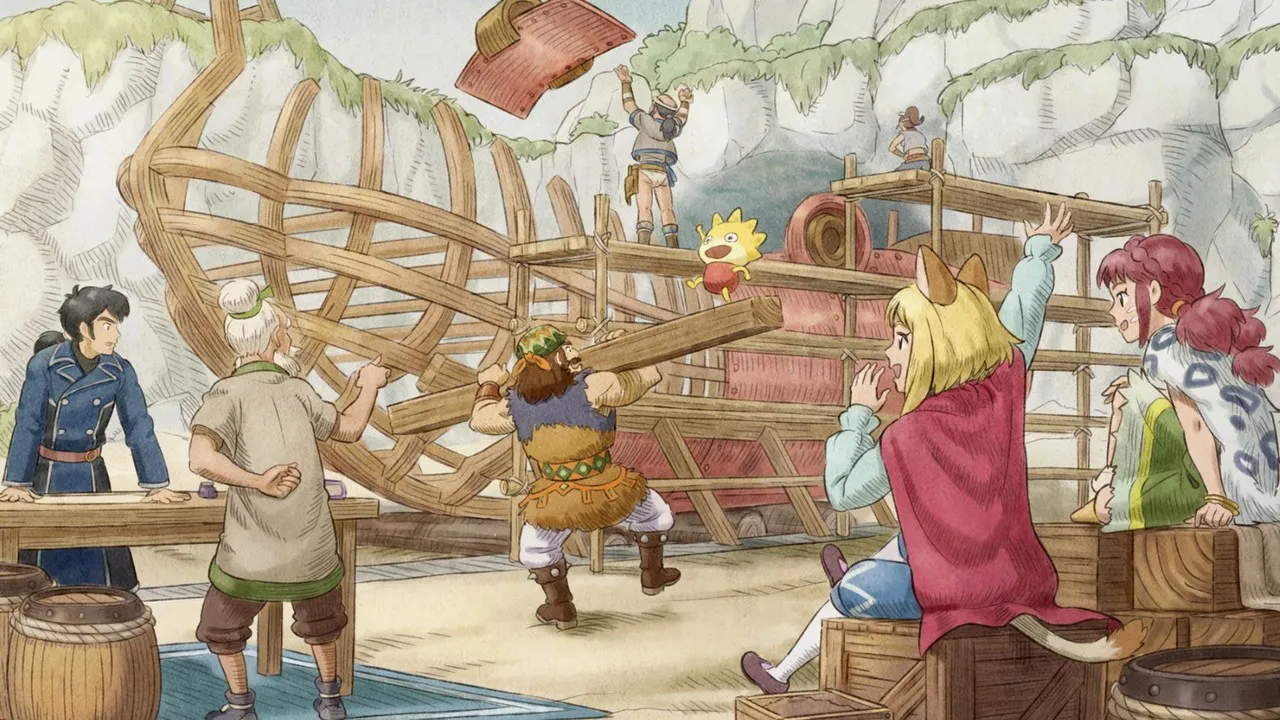 Ni no Kuni II: Revenant Kingdom – Exploring the WorldThese adventures lead players through diverse and visually stunning locales: the bustling, ornate streets of Goldpaw, the serene, aquatic beauty of Hydropolis, and the stark, industrial landscape of Broadleaf. Yet, as the saying goes, there’s no place like home. Evermore, whether in its nascent stages or flourishing as a powerful nation, is built and nurtured by the player, offering a satisfying sense of progression.
Ni no Kuni II: Revenant Kingdom – Exploring the WorldThese adventures lead players through diverse and visually stunning locales: the bustling, ornate streets of Goldpaw, the serene, aquatic beauty of Hydropolis, and the stark, industrial landscape of Broadleaf. Yet, as the saying goes, there’s no place like home. Evermore, whether in its nascent stages or flourishing as a powerful nation, is built and nurtured by the player, offering a satisfying sense of progression.
Recruited NPCs contribute their unique skills to Evermore, from hunting and farming to crafting weapons, developing magic, and bolstering the army. This interconnectedness between character recruitment, kingdom development, and quest design creates a dynamic gameplay loop. The “headhunting” aspect, reminiscent of Metal Gear Solid V, is streamlined with manageable side quests and a 100-NPC limit, making Evermore’s growth feel organic and rewarding.
While Evermore’s construction is straightforward, lacking freeform building placement and relying on a timed income system, the cycle of exploration, kingdom development, and upgrades provides a compelling sense of accomplishment. Witnessing Evermore’s expansion alongside Evan’s personal growth is a core element of the game’s appeal.
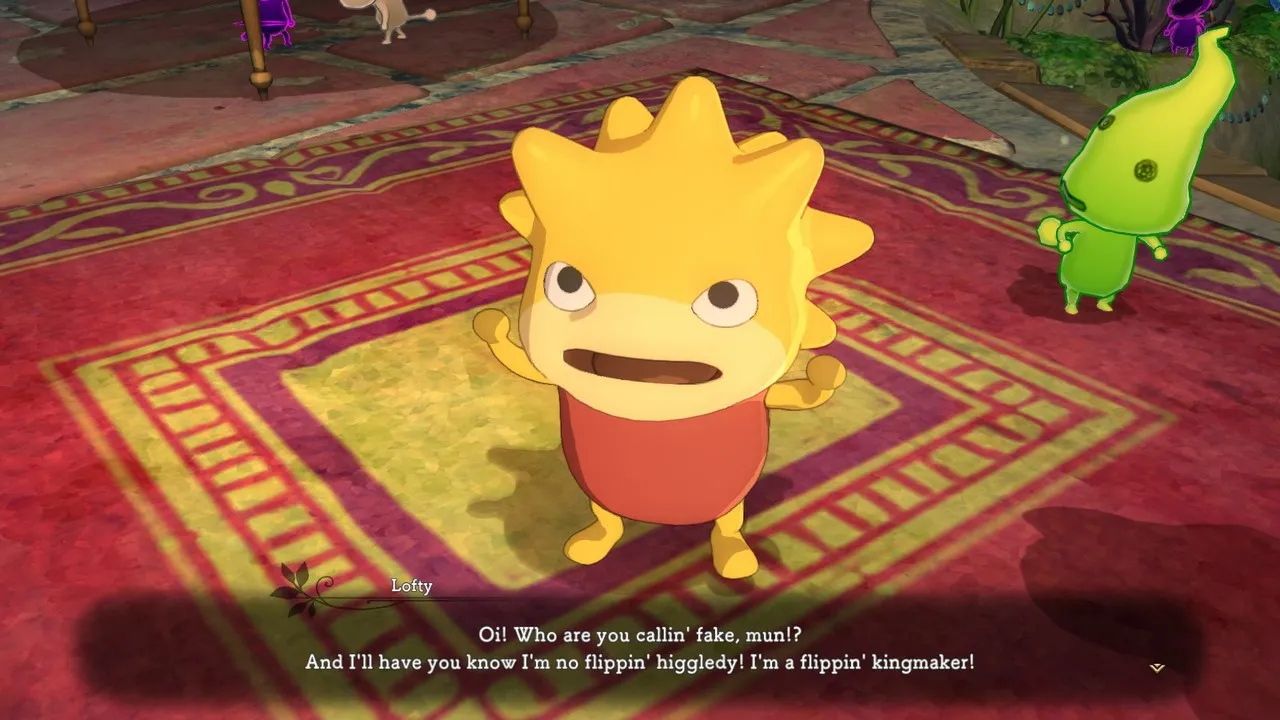 Ni no Kuni II: Revenant Kingdom – CombatSurprisingly, Ni no Kuni II’s RPG mechanics are well-crafted, despite initial impressions of embodying the worst aspects of J-RPGs. A common issue in loot-heavy RPGs is the accumulation of useless items. Ni no Kuni II offers several avenues for utilizing these resources effectively. Crafting plays a significant role, from weapons and armor to Higgledy nurturing and cooking. These activities consume a considerable amount of resources, gathered through exploration or Evermore’s production facilities. The game cleverly links quest rewards to the requirements of other quests, encouraging players to engage with the various tasks without feeling repetitive.
Ni no Kuni II: Revenant Kingdom – CombatSurprisingly, Ni no Kuni II’s RPG mechanics are well-crafted, despite initial impressions of embodying the worst aspects of J-RPGs. A common issue in loot-heavy RPGs is the accumulation of useless items. Ni no Kuni II offers several avenues for utilizing these resources effectively. Crafting plays a significant role, from weapons and armor to Higgledy nurturing and cooking. These activities consume a considerable amount of resources, gathered through exploration or Evermore’s production facilities. The game cleverly links quest rewards to the requirements of other quests, encouraging players to engage with the various tasks without feeling repetitive.
For rarer items, the Swift Solutions organization provides a convenient acquisition method. Taskmasters, located in major cities, assist in obtaining hard-to-find items or identifying potential recruits for Evermore. They accept Tokens of Gratitude, earned through simple fetch quests, which, while reminiscent of MMORPG grind, are integrated seamlessly into the gameplay loop. This creates a dynamic flow between item acquisition and utilization, preventing an overwhelming accumulation of useless loot.
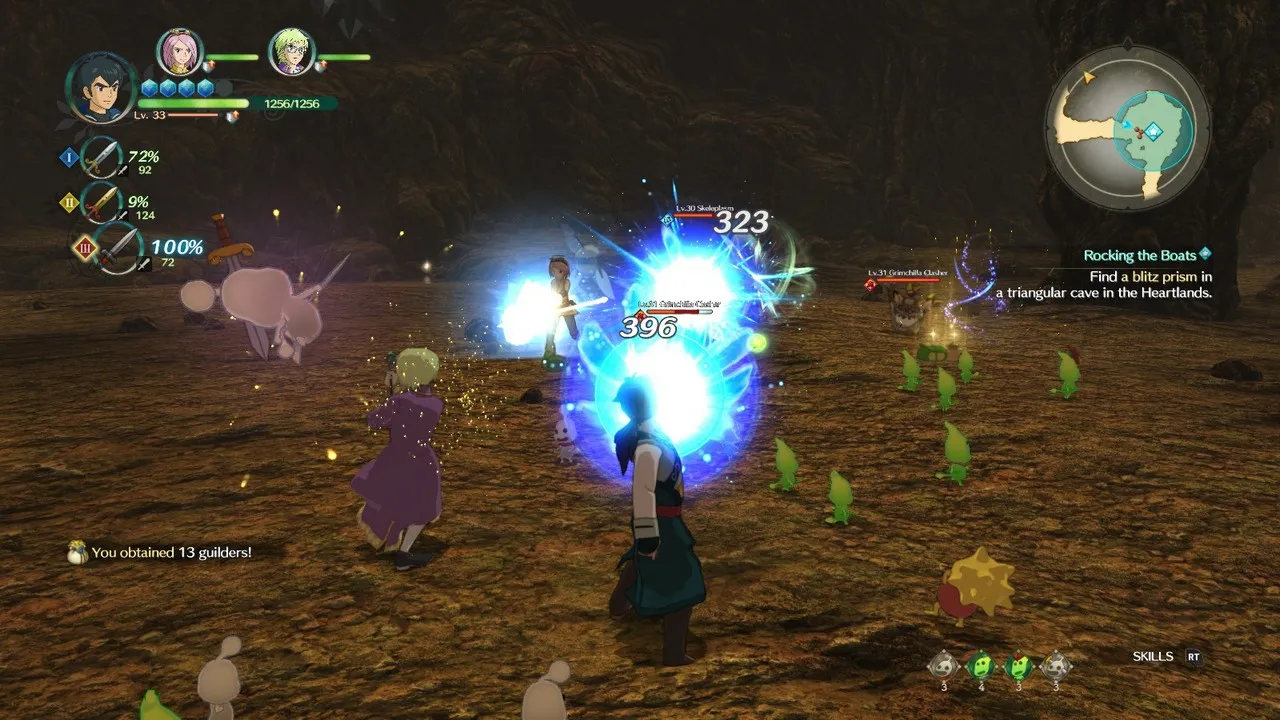 Ni no Kuni II: Revenant Kingdom – Combat with HigglediesEmbracing its action RPG nature, Ni no Kuni II exhibits familiar genre tropes, albeit with mixed results. Enemy encounters lack variety, and the absence of attack canceling during combat makes it feel less responsive than other action RPGs. The overall difficulty is relatively low unless actively engaging with higher-level “Tainted” monsters. However, the game offers a variety of visually appealing special abilities and magic, and the ability to switch between three party members (out of six) adds tactical depth.
Ni no Kuni II: Revenant Kingdom – Combat with HigglediesEmbracing its action RPG nature, Ni no Kuni II exhibits familiar genre tropes, albeit with mixed results. Enemy encounters lack variety, and the absence of attack canceling during combat makes it feel less responsive than other action RPGs. The overall difficulty is relatively low unless actively engaging with higher-level “Tainted” monsters. However, the game offers a variety of visually appealing special abilities and magic, and the ability to switch between three party members (out of six) adds tactical depth.
Combat is augmented by the “Zing” system, a special attack gauge that fills as players attack. Reaching 100% Zing enhances the next special attack’s damage. Since Zing is tied to weapon and ability elements, players equip three weapons simultaneously to adapt to different enemy types, optimizing Zing usage.
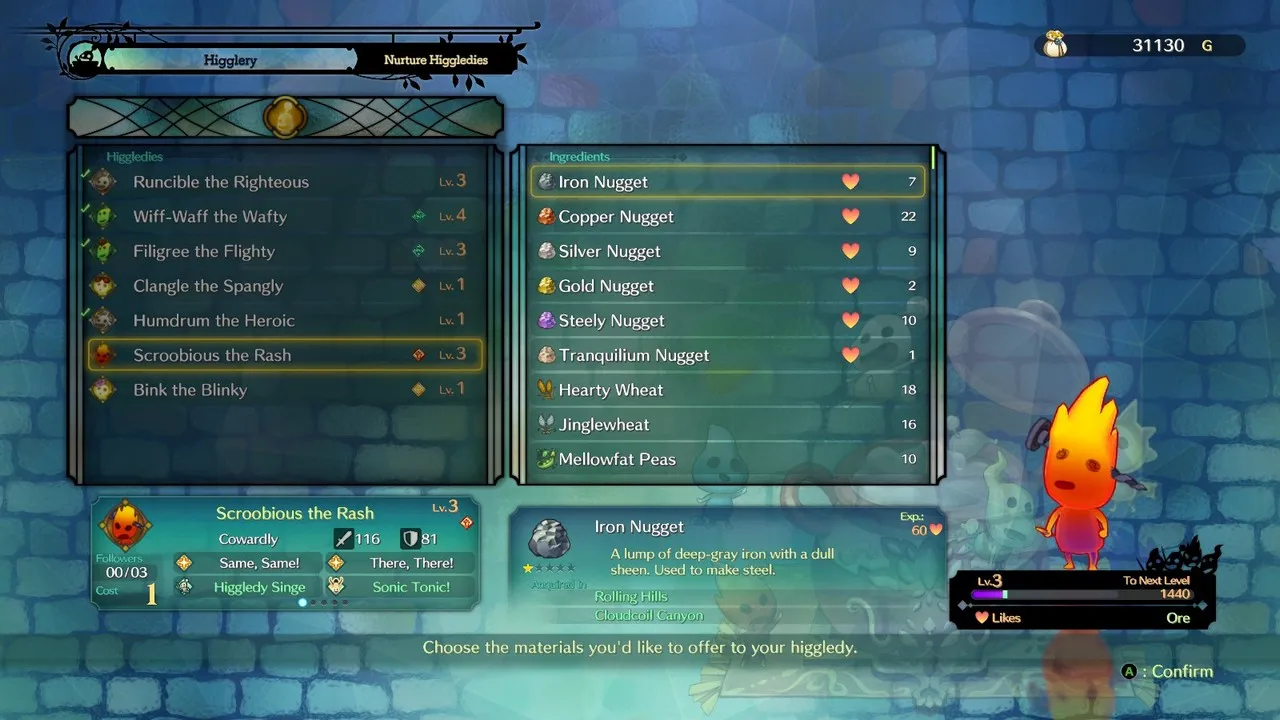 Ni no Kuni II: Revenant Kingdom – City of GoldpawHiggledies, small, whimsical creatures, provide passive support during combat. They can create healing zones, revive fallen party members, apply debuffs to enemies, or even combine to deploy a cannon. While their assistance is supplementary, their unique abilities add a quirky and creative dimension to battles.
Ni no Kuni II: Revenant Kingdom – City of GoldpawHiggledies, small, whimsical creatures, provide passive support during combat. They can create healing zones, revive fallen party members, apply debuffs to enemies, or even combine to deploy a cannon. While their assistance is supplementary, their unique abilities add a quirky and creative dimension to battles.
A Kingdom Divided: Narrative Shortcomings
While visually reminiscent of Studio Ghibli’s charming style, Ni no Kuni II lacks the studio’s narrative depth. The game’s protagonist, Evan, resembles Kiki from Kiki’s Delivery Service, not in terms of setting or plot, but in their portrayal as inherently good-natured individuals.
Evan is not just the protagonist; he’s the savior destined to defeat the villainous Doloran. This somewhat generic and predictable narrative casts Evan as a “Mary Sue” figure, effortlessly solving problems due to his chosen status. However, this isn’t necessarily detrimental.
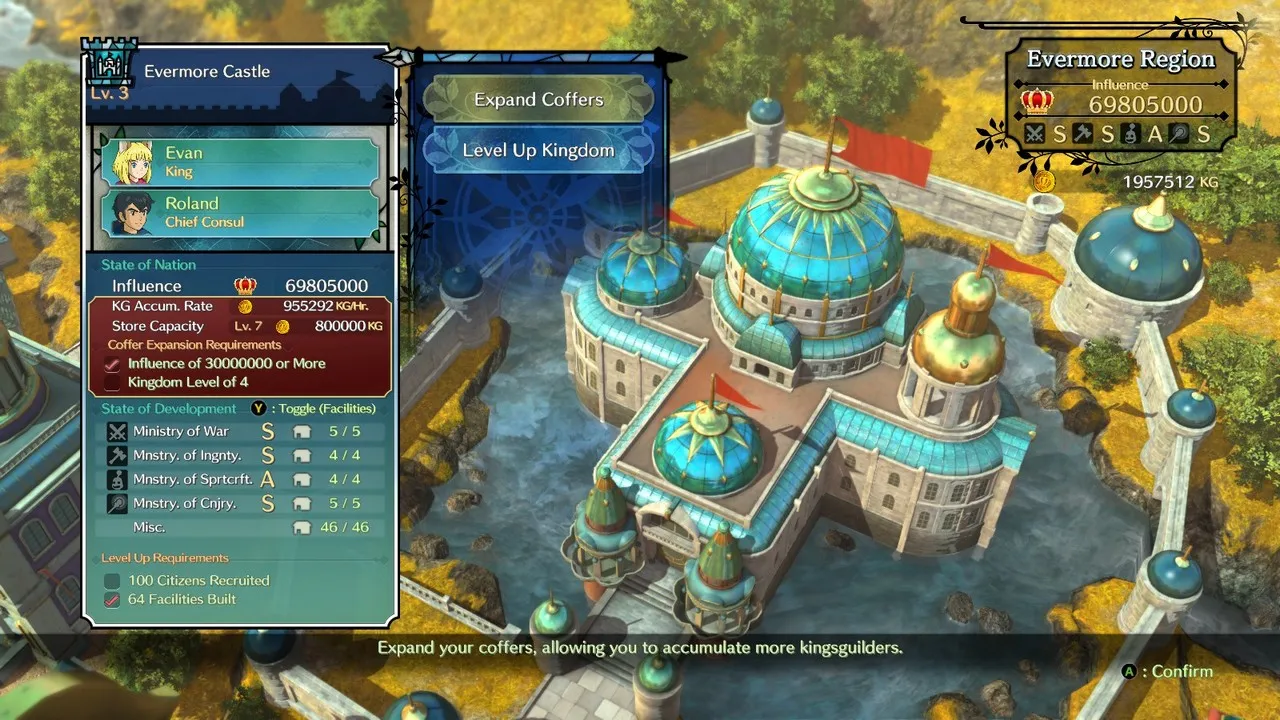 Ni no Kuni II: Revenant Kingdom – CharactersEvan’s inherent goodness and relentless optimism, while perhaps naive, drive the narrative forward. His unwavering belief in a world of everlasting happiness, and his tireless efforts to achieve it, become the player’s motivation to continue the journey. If everyone possessed a fraction of Evan’s kindness, the world would undoubtedly be a better place.
Ni no Kuni II: Revenant Kingdom – CharactersEvan’s inherent goodness and relentless optimism, while perhaps naive, drive the narrative forward. His unwavering belief in a world of everlasting happiness, and his tireless efforts to achieve it, become the player’s motivation to continue the journey. If everyone possessed a fraction of Evan’s kindness, the world would undoubtedly be a better place.
Unfortunately, the rest of the narrative struggles to match Evan’s charm and sincerity. Beyond Evan and Roland, character development is minimal. Supporting characters like Batu, Tani, Leander, and Brecken remain one-dimensional, serving their roles without significant growth. The four key figures in the kingdoms Evan seeks to unite could have provided narrative complexity, but their predictable manipulation by Doloran feels contrived.
The repetitive “surprise villain” trope undermines the story’s impact. For example, in Chapter 4, the resolution of a critical plot point feels rushed and illogical, highlighting the narrative’s inconsistency. Such instances detract from the story’s weight and leave the player wanting more.
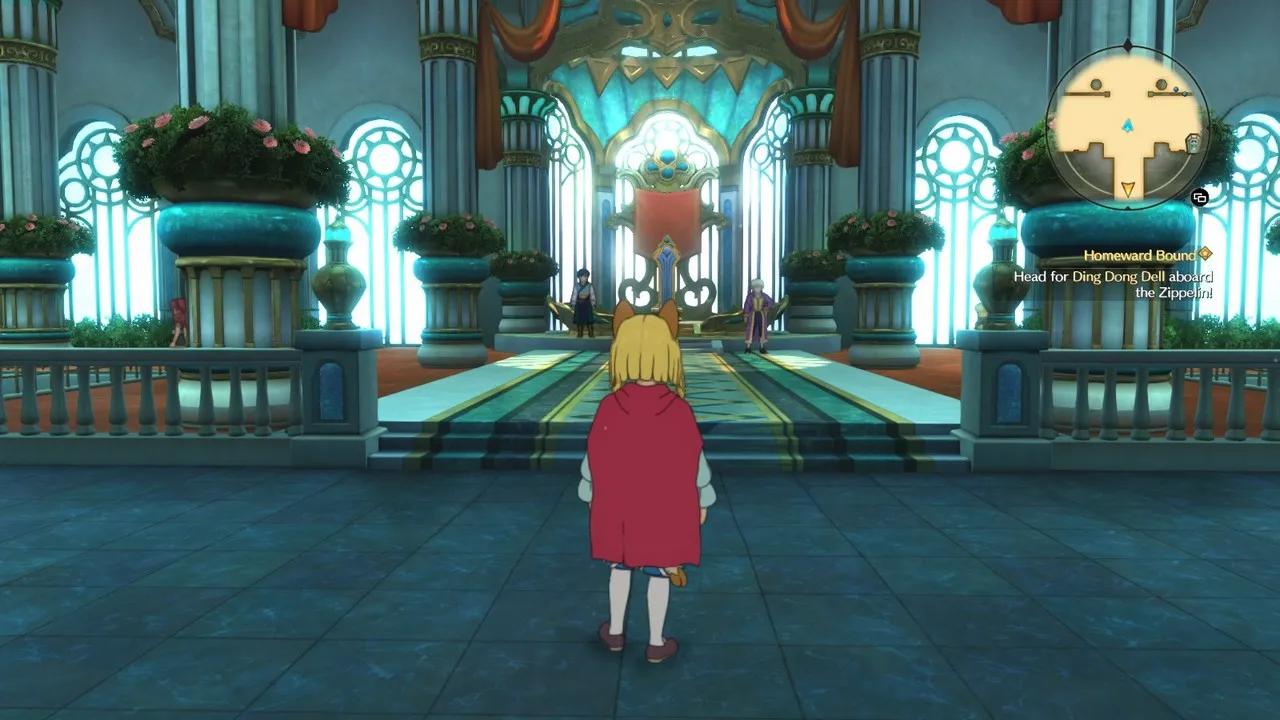 Ni no Kuni II: Revenant Kingdom – In-game CutsceneFurther hindering the narrative is the inconsistent voice acting. Silent dialogue is a common J-RPG trait, but Ni no Kuni II’s blend of text and voiced lines is jarring. Regular conversations lack voiceovers, yet characters utter sounds or mumble before each line. Key scenes have voice acting, but the selection seems arbitrary, lacking logical consistency.
Ni no Kuni II: Revenant Kingdom – In-game CutsceneFurther hindering the narrative is the inconsistent voice acting. Silent dialogue is a common J-RPG trait, but Ni no Kuni II’s blend of text and voiced lines is jarring. Regular conversations lack voiceovers, yet characters utter sounds or mumble before each line. Key scenes have voice acting, but the selection seems arbitrary, lacking logical consistency.
A Kingdom at War: Skirmish Mode’s Shortcomings
The final key aspect, and arguably the most flawed, is the real-time strategy Skirmish mode. Players command a legion of four units surrounding Evan as their commander. The controller-centric controls prove cumbersome, limiting unit navigation to circling Evan with LB/RB buttons, resulting in clunky encounters. The fixed camera angle further exacerbates this issue, leaving units vulnerable to attacks from behind.
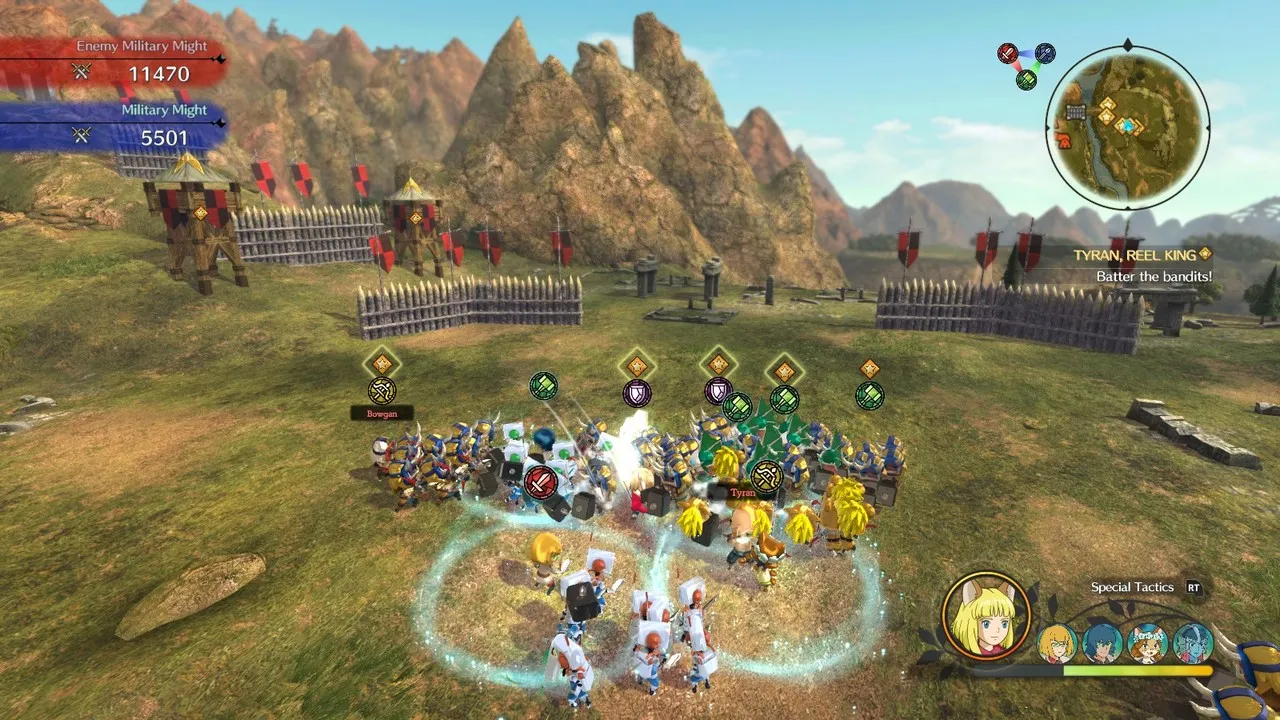 Ni no Kuni II: Revenant Kingdom – Skirmish ModeSkirmish combat is simplistic and unresponsive. Units rely on a rock-paper-scissors system (spears > swords > hammers > spears), but feedback on unit effectiveness is unclear, relying on small NPC notifications. The core gameplay loop involves holding LB/RB and the attack button, occasionally using special abilities. While visually impressive, these abilities offer limited tactical depth.
Ni no Kuni II: Revenant Kingdom – Skirmish ModeSkirmish combat is simplistic and unresponsive. Units rely on a rock-paper-scissors system (spears > swords > hammers > spears), but feedback on unit effectiveness is unclear, relying on small NPC notifications. The core gameplay loop involves holding LB/RB and the attack button, occasionally using special abilities. While visually impressive, these abilities offer limited tactical depth.
Skirmish mode, while presenting itself as real-time strategy, ultimately feels like chaotic battles with minimal player control. While only three story-mandated skirmishes exist, several NPC recruitment quests require engaging with this flawed system. Furthermore, a portion of the final boss fight incorporates Skirmish elements.
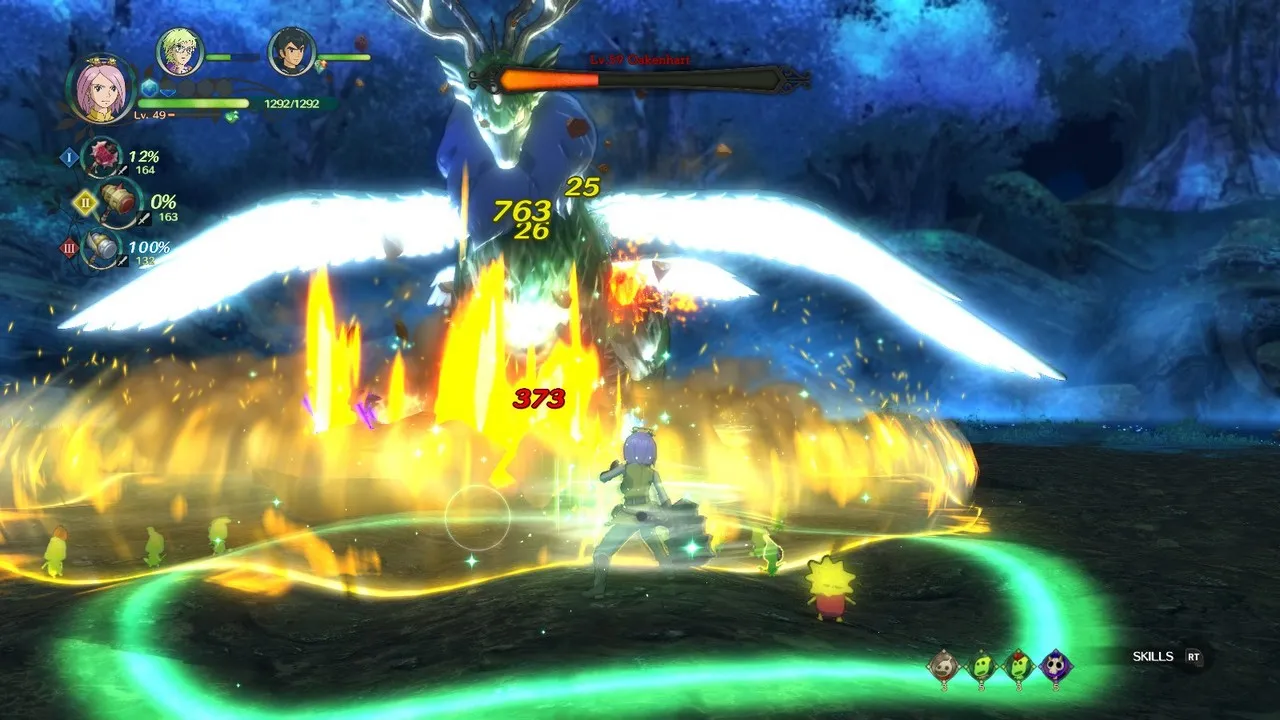 Ni no Kuni II: Revenant Kingdom – Skirmish Mode Overview
Ni no Kuni II: Revenant Kingdom – Skirmish Mode Overview
Ni no Kuni II: Revenant Kingdom is a kingdom of contradictions. It offers a charming world, engaging kingdom building mechanics, and a well-designed RPG system. However, its narrative inconsistencies, inconsistent voice acting, and flawed Skirmish mode detract from the overall experience. Despite its shortcomings, the game’s heart lies in Evan’s unwavering optimism and the rewarding journey of building Evermore. It’s a journey worth undertaking, even with its bumps along the way.
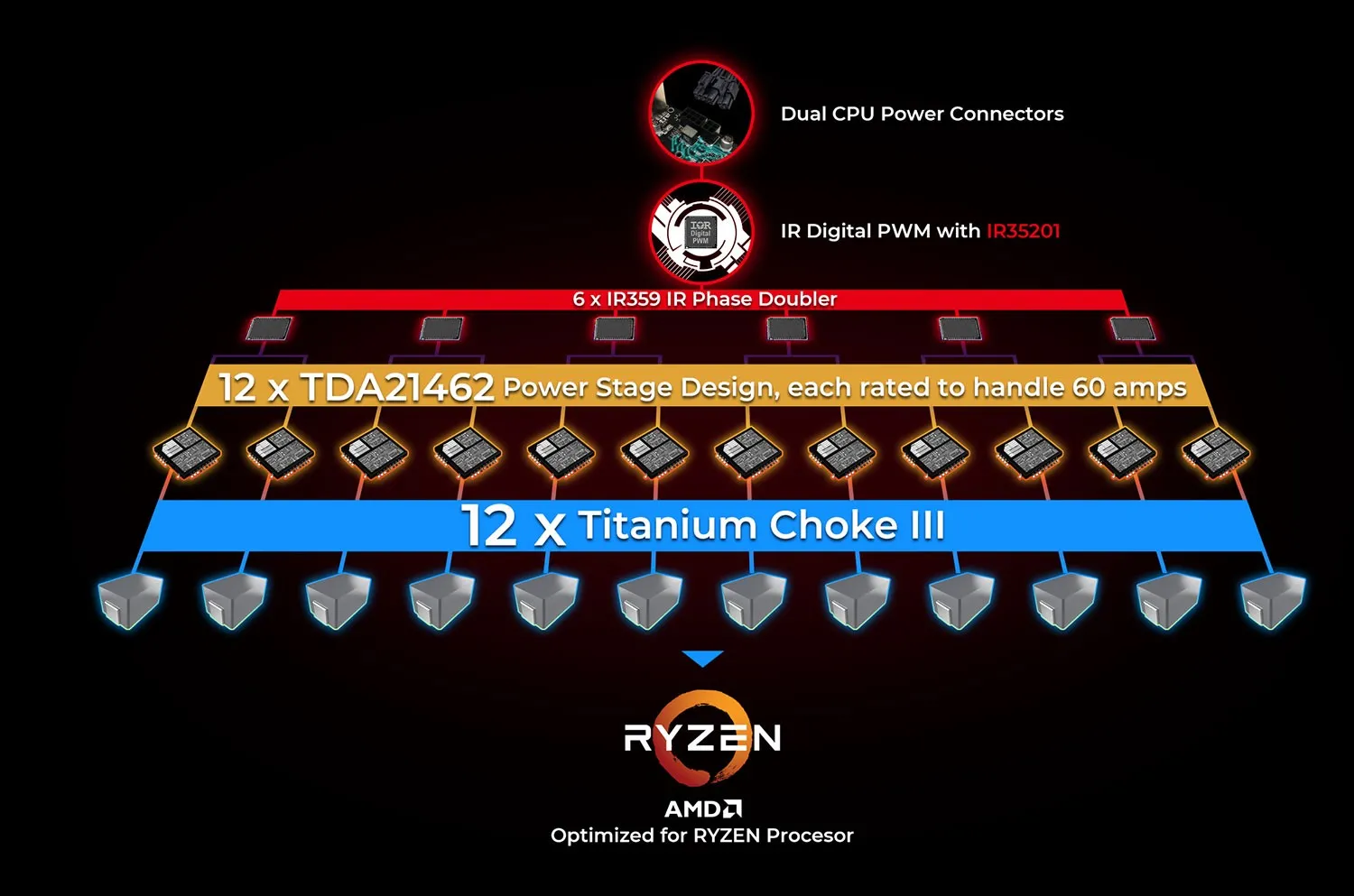
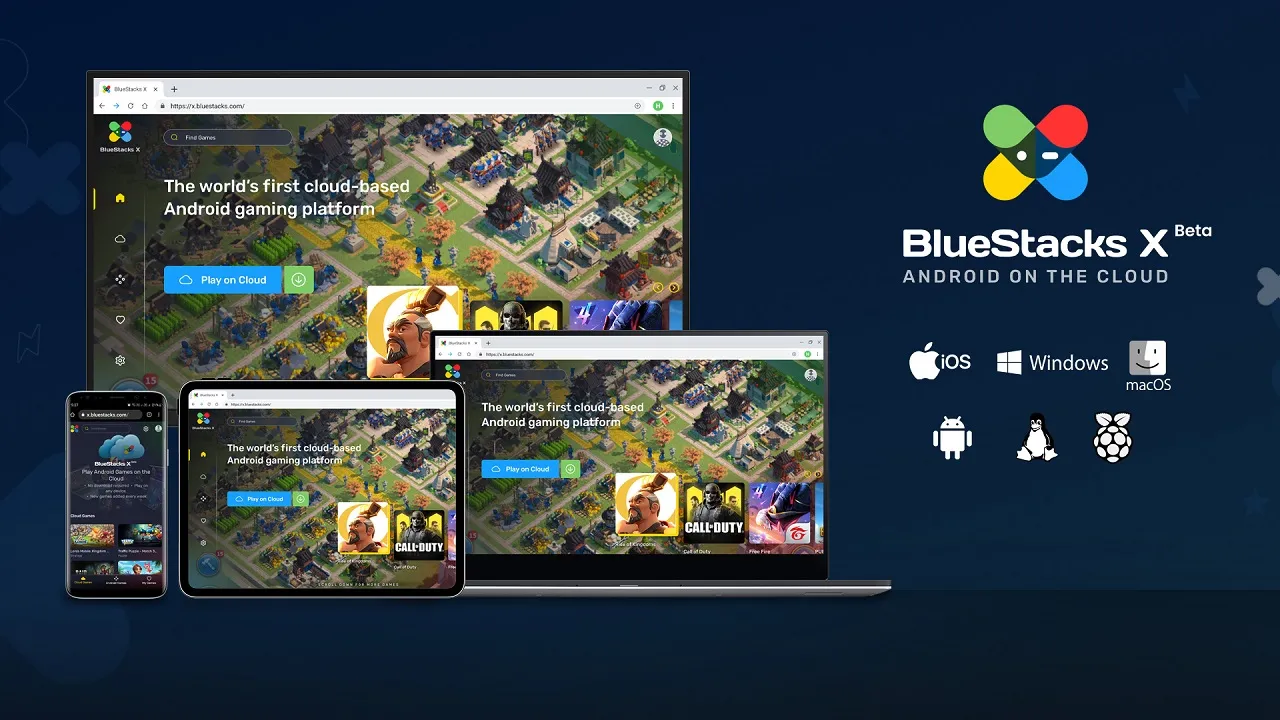

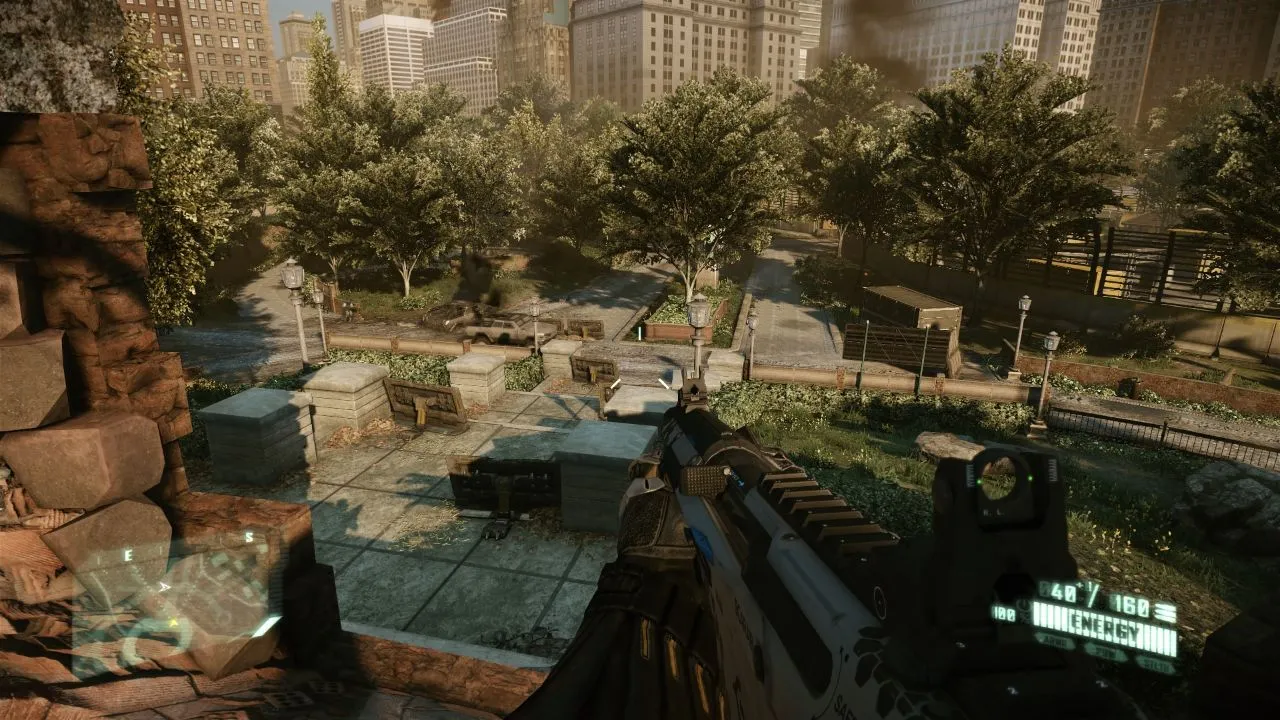
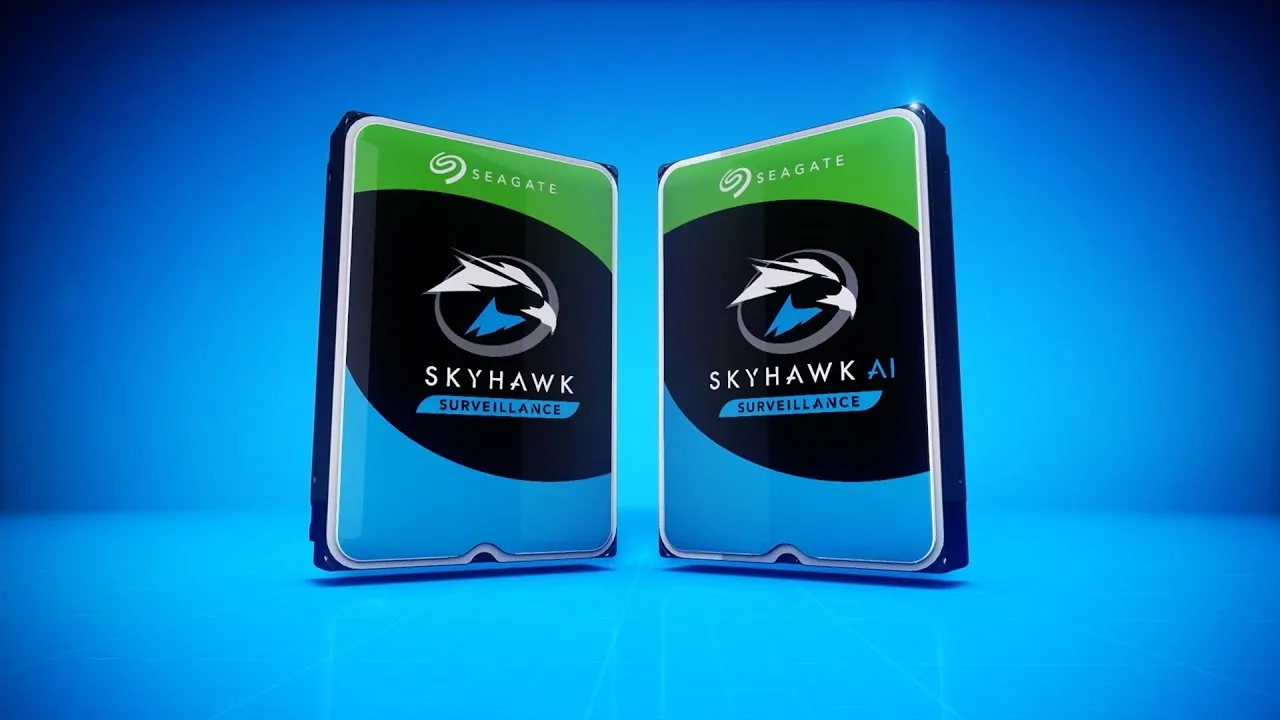
Comments (0)